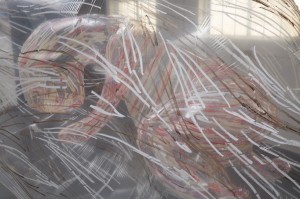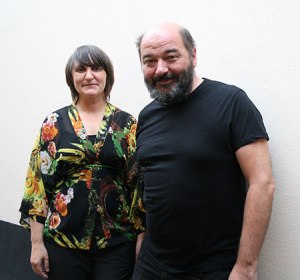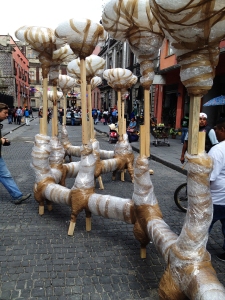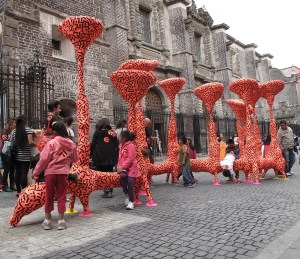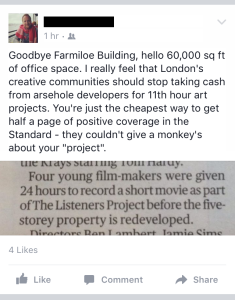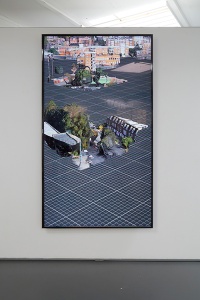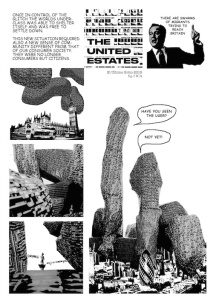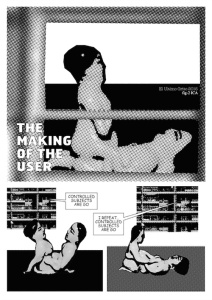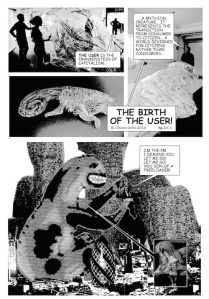A story in verse inspired by Week 24 of fig-2. As the days pass he is losing his sight, going blind, alone. At night in his dreams she and he are together but when he wakes he can’t remember her. As the days and nights pass they grow together, apart. I hope that you will find it beautiful. Original artwork “Sleepwalker” by Tess Cunningham.
Apart, we are together
“Goodnight Irene, Goodnight Irene,
I’ll see you in my dreams…”
First day (Monday, January) – The hospital
First night (Monday-Tuesday, February) – The ballroom and the masque
Second day (Tuesday, March) – The funeral
Second night (Tuesday-Wednesday, April) – The mountains and the sea and the sky
Third day (Wednesday, May) – The city
Third night (Wednesday-Thursday, June) – The magic lantern cinema
Fourth day (Thursday, July) – Summers
Fourth night (Thursday-Friday, August) – Dream within dream
Fifth day (Friday, September) – Pain
Fifth night (Friday-Saturday, October) – The marriage in the moonlight
Sixth day (Saturday, November) – Home
Sixth night (Sunday, December) – Dream without dream

First day (Monday, January) – The hospital
I’m going blind.
Like my father and his
I’m going to go blind.
In the bright morning
with birdsong
I was happy as an egg;
then the auld tune,
I’ll see you in my dreams —
Just the TV, mute flickering
in the corner of the kitchen;
lonely night in spring —
tapes of old shipping forecasts,
occasional rain.
I’m scared that when I lose my sight
I’ll lose my memories too —
it’s irrational — or I’ll have nothing
but memory to live in, a haunted
house full of ghosts
and noone living to remember.
Then the screen
goes white —
— you are dreaming
First night (Monday-Tuesday, February) – The ballroom and the masque
you are dreaming – in the dream we are lovers.
we have always been lovers.
we waltz in the blue ballroom, a masque dance
of faces without faces and figures
without form.
the chandelier is made of rain,
sparrows and ravens.
when the music stops
we lose each other and you don’t remember me —
remember these words
“apart, we are together”
then you would remember everything
and the day would be night
and the night would be day
the masks lift from our eyes
and rise as black birds into the sky —
the eyes of a black bird,
a blue dog yelps, chases in a tight circle
the flailing thing,
chase and flail, the jaws champ,
growl and banter, bark, tramp
and jump, jump and bite.
remember me
i will carry you
the waters will bear you
to sleep
if you could only remember the words
when you wake up from the dream
“apart, we are together”
our faces were unknown. we met, but not —
dreaming a sky
a raven
at nightfall
in the first night of the dream
you will dream of me,
but we will never meet:
each morning you will wake;
i will have gone from you
and you from me.
apart, we are together —
the lightning blast and the world off its blood axis. begging,
hungry for a dream. together
in the dream we are apart,
apart, we are together.
remember these words
Second day (Tuesday, March) – The funeral
“Lilies, the flowers
of sorrow,” she said, long ago.
And today, lilies.
My father and grandfather
died blind, and both for a time
lived blind.
Grandad was a poacher turned gamekeeper,
literally. He used to hunt on Croydon Common
and make ‘rook pie’.
“No-one makes rook pie,
do they any more?” said my grandmother.
I’ve never heard of rook pie before or since.
My father’s funeral.
The night before they slapped his body
down to dust:
radio static
crackling; my mother singing
to herself nearby.
Two black horses
leading the hearse
to the house of the dead.
My poor father and his emerald knife
scratching and squinting his eyes away
chipping away into the night for pennies.
Sometimes the money wouldn’t come,
he wasn’t the sort to question things;
gleaming white plates, a bit of gravy,
roast and duck fat,
the slave and the bones in chains.
Il pape, not the pope, it’s what we used to call him –
Ill pappay – the fathering flower of a Tuscan vine.
At least it wasn’t Il Duce, Dad – the dome of your head,
richly tanned, it looked more boiled, a kipper
pumped with hot Neapolitan air and microwaved.
He squinted away his eyes,
those bulging applejohns on summer stalks –
winter hospital glass, the breath condensing,
I traced his face with my pinkie —
one of my first memories and the whiteness
of the wild as the snow fell at the end
of a cold decade. They buried the debts and lots,
filled every bed, holes in the light,
blank spots, blank stoppages,
every patch and face
blurring and peeling into smoke. The drake’s lantern:
cold sympathy served as warmed through
remains of a wastrel day –
a terminus, bus-light, trapped agents.
The clock stopped at 12.09,
the moment at which, it is said, he died.
Maybe the two men are actually ghosts in the graveyard.
The gravestone looks white
when you break it open,
like coconut ice.
What I haven’t said that I wanted to say — Dad
wanted to say, said he should have written a book,
but where was the book under the pram wheels,
the paycheque and rent demands,
so where was the book – he lived as he lived
and he died, blind –
he gave away his time
and in time he gave away
his health – his body
falling apart as his mind
crumbled – the body follows —
When I’m old, before I die
The colour will flood back into my eyes
and the skies will fill up with tears
raining back as colours
to brighten my death.
Second night (Tuesday-Wednesday, April) – The mountains and the sea and the sky
in the second dream, the second night,
when you can’t see a metre in front of you
you make up stories about things you can’t see
the rock shook
and the mouse swallowed the mountain.
the mountain gives birth to a mouse:
an unseen promise – promise of a promise:
it’s not the silence of your blindness
river of ghosts
water lanterns
printed on the wind
i was looking for you
before i found you
in my dream. you were my dream
then one day i woke
and you were still there
lying beside me.
i kissed you, lightly,
so as not to wake you.
Third day (Wednesday, May) – The city
I remember this one.
She served me a shot glass of carrot soup and I pretended it was delicious.
We went into a salty backroom and did monkey impressions together
and I licked the sweat off the back of her shoulders.
Spermbank alley
a wishbone noose
& red flashes
“this machine charges”
Sleep without dreams
night without stars
— darling come back to me —
I walked home in the rain
past what’s her name
and why did I never ask,
she’s there in a blanket
with a tin cup for money,
smoking a roll-up.
She ‘says’ with her hands
like hailing a cab to nowhere,
“No man is a traffic island.”
Her laugh
like a magnet
to a magnet.
The city’s cancer – this,
in the light of lost things
the list of never agains,
never anothers,
I get a cab to the edge of the city
and ride in obnoxious frippery
one last time.
In the morning,
a wineglass full of rainwater.
The list of things I’ll miss seeing
when I can’t see:
dropped where a conker
cleaves beneath my boot, an old
yellow tennis ball.
I’ve kicked at the pricks
with their selfie sticks,
the white peal of a rock drill
burrowing into the hard ground
at Hoxton tea-lights,
that bloody squealing,
the screeching opera harpy, heavy machinery
creeching, mechanical lurch
of an Anglican brooch,
a junk gaberdine,
so much, the links’ punch
in the morning, the dread thump,
clump and me, grinch, and then
a tin
can
clatters
down
the steps
it
hits the tracks
& becomes a train
Third night (Wednesday-Thursday, June) – The magic lantern cinema
i want to tell you, if I could tell you,
all that you forget when you wake, all
your body remembers, the night’s
enchantment and the day’s rough course.
my love is death to you
my love for you is death
it will choke and smother you
wrap you and leach
the air from your lungs
the love from your heart
the sight from your eyes
and I will hold you as a dead doll
and you will be mine
i watch you while you sleep;
i know every curve of your body,
the childish perfection
of your skin,
the crown of your soft
angry eyebrows and your
hollowed eyes.
i know every mole
and turn of muscle
but you remain mysterious.
my love is you
my love is death
my love is you, death
my love is death
Fourth day (Thursday, July) – Summers
It was summer and her hair was spring
buds and hollyhocks
and yellow straw.
We loved in the lengthless day
and held each other in the evening,
red light for cherry lips
and sticky finger tips,
blood heat and beautiful
pumpkinseed and snowdrop.
She fell in the summer
and the apples in the orchard
withered overnight and all
fell rotten among the rows
in which we’d run.
She fell and the sun
never rose again.
You are dreaming.
Vision of something I’ll never see again.
List the things I’ll never see,
a chill in the air —
the imprint of a body
in the empty bed.
In the light of lost things,
the list of never agains
and never anothers:
the rain,
the baby boy held in the lad’s arms
and the leaves’ rich green.
The bugsplat on the windshield:
“Why don’t you bloody clean it” she said.
“Clean what.”
“It’s filthy!”
“Looks all right to me,” I said.
It looked all right to me.
The sun is only setting
but it feels like 4am.
The list of things I’ll miss seeing
when I can’t see:
the puddle i jump into
& the splash it makes
twenty years before.
How perfect to live
at this moment – at dusk,
with the light fading.
I’m trying to make myself sad –
to make myself the saddest I can be, the saddest anyone
has ever been. So sad that finally
when I rise panting from the plunge,
starved for breath and gasping, when the sadness breaks
all over me and splashes back into itself in blue,
I’ll be less sad, even happy.
Sad happy or happy sad. I will stare into my life
and make myself the saddest I can ever be,
because finally
when I am the saddest anyone has ever been
I will be happy.
It isn’t black, blindness —
I don’t see black
but live a miasma of colour,
yellow, blue, green. I see
not red, not black. It’s like
swimming in a dream.
Fourth night (Thursday-Friday, August) – Dream within dream
i dreamed you were dying, i
dreamed you’d died
alone, at night, without me
and i was a ghost beside you,
absent and there, and you
cried out but i wasn’t there.
then i dreamed you were dying
in a bed below me
and my love couldn’t save you.
i did nothing, didn’t help, watched, held
your skin as the sickness emptied itself out,
the violence of the choked air rocked by screaming,
the shaking apart of the soul in anguish,
molt of angelwing, flake and fleck of bile, blood —
i did nothing.
you held me then in the morning
but I couldn’t tell you.
and dreams are real.
i dreamed in the dream you’d died.
you were blind and passed at night
from the unseeing to unseen shades —
blindness is a truer kind of vision.
as we pass into the unseen,
the sleepwalker
at the edge of the cliff
leaps out of the dream.
Fifth day (Friday, September) – Pain
Dream of falling
blossoms — I wake
clutching a flower;
it reminds me of something i can’t remember
but know I’ve forgotten.
If I could not touch it
it would come back to me.
Outside in that weird light,
the last whistle of the guard —
the season’s snapped and it seems later than it is.
Everyone’s knocked off early.
They turned off the lights,
those fifties brights on brutalism,
halls, halls and halls and halls. Maybe I have dementia.
I bruised my knee. Crack, it caught on the corner –
more bloody painful than the old, you-know,
sight thing.
The slowness of the end,
how the spine seems like a cross
on which to hang flesh.
“I will drop you like an egg,” she said.
“You did,” I said.
Just the TV, mute flickering
in the corner of the kitchen;
the sun is only setting
but it feels like 4am.
Pain. That pain.
Pain of loss, pain of losing.
Pain of this, pain of choosing you,
Pain of drawing the moon down and burning up its flame to this
charred remnant, char
and smoking petrichor.
Pain of these eyes, these fading eyes,
the world dissolving into grey
and blue lights, a flood and cloud
of shimmering snailtracks and spiderdances.
The photograph is blurring, like film caught in the projector tearing into flame, black and yellow – the image of you in my mind is burning away, resolving into flames, into ashes, into night and nothing.
Pain of these joints, robot bolts
rusted with brown scars and tight spasms,
bend and warp.
Pain of you – I never meant for this.
Pain of the sunset when the paint has peeled off,
Pain of the dream that flies at morning —
I open my eyes
in the remnant of their light
and stare back at myself,
blank, finished, forgotten.
I am hollow. What remains
of a man when what makes him
has collapsed – a shrunken thing,
a beast, a ghost, sightless and sorry.
What is there left to want?
The ostrich flew.
Rook pie.
My head hurts. My eyes,
blood pressure, bad stories and failed
resolutions. There’s nothing inside me
but broken organs playing the wrong notes of forgotten tunes
tunelessly, voicelessly, in resounding silence,
as if nothing were not beautiful
as empty as fullness
as full as emptiness.
Pain of the laboured breath, rasp and pant;
Pain of the pint’s last third I can’t finish, I’m too weak to drink;
Pain of the empty table
stretching in front of me
as I drink alone.
Loss
Desire
Despair
Pain of that autumn morning
white with winter snow
Pain of
Pain and waste
Waste of
Fifth night (Friday-Saturday, October) – The marriage in the moonlight
what does midnight taste like?
a kiss without lips. you were sleeping.
do you remember our wedding,
when we were married in moonlight?
tender me
laid as carved in
lies on a cold slab of stone
shaken awake and peeling off skin
finger by finger
pretty white fingers
from my throat.
only love can end these tears
only death can open these eyes,
only blind —
these fragments
and movements
will perish
and fly from us
and become
what never was.
our love is not like love.
remember, we met in the dream,
two souls, unalike
in ways, the fracture of one mirror.
we shared our souls. what is the soul
if not desire? you are
my soul. what else could that be?
form the words. form the words
at the apex of the palette,
say the words, please, the sleep
still crumbly and crinkly in your eyes
before you remember you are yourself,
before you open your eyes to whatever’s left,
remember the words, say them,
say eternity, say
together, say
“apart, we are together”
and we will never be apart.
but when you wake
i know you won’t remember.
Sixth day (Saturday, November) – Home
Radio static
Crackling. My mother singing
To herself nearby.
Alone. Utterly alone.
I’m scared that when I lose my sight
I’ll lose my memories too —
It’s irrational — or I’ll have nothing
but memory to live in, a haunted
house full of ghosts
and noone living to remember.
The fable of the man who remembered,
the man who couldn’t forget —
skating on Lake Empty;
the darkness is coming in
the dark is inside.
Funny, memory. The torturer
and the laughing blade,
hacking away the happy evenings,
twisting the screwblade
of black nights spent staring
blankly, blackly into bleachblack
despair, death at your fingertips
but denied that mercy.
Haunting the ghosts,
the last guest —
Hotel Amnesia:
Memory Palace —
a deposed King
haunting the ghosts.
The house has grown cold
and soon there will be no one
left for ghosts to haunt.
I close the door.
I spent years trying to write a musical setting of Shakespeare’s Sonnet 116. My grandmother had recited it to me while she was going blind.
I could never finish the music. I started to believe that if I ever finished the setting she would die, so I didn’t.
She died very alone and very scared, and I never finished the music.
I guess I never will.
It isn’t black, blindness —
I don’t see black
but live a miasma of colour,
yellow, blue, green, I see,
not red, not black. It’s like
swimming in a dream.
Sixth night (Sunday, December) – Dream without dream
i will carry you
the waters will bear you
to sleep
two worlds in time
you are declining
you will move into and become the night
and embrace that dark world in your depths.
you will bridle the moon and ride on the stars
away into peace, the peacefulness
of last things, the silence that ends the sentence.
i’m standing on the egde of you,
ready to dive with you, into you.
you are not blind.
without sight
we see the whatness of things,
trembling — the terror
of the real, when the lights blaze
at the words
at the tip of the tongue
and the end of every judgement —
the night’s judgement.
moths flit and dazzle.
life is short and art
so long to learn. love astounds,
then it slips away.
my love is death to you.
my love for you is death.
it will choke and smother you
wrap you and leach
the air from your lungs
and the love from your heart
and i will hold you like a doll
and you will be mine
your love establishes the death in me,
the life and death in things,
the wreck of all
the shame and hope
of ending and beginning.
in the lights’ sparkle
i dreamed i held you.
our father in emerald.
please don’t lose
the best thing that’s inside you,
don’t give away
the biggest thing that drives you.
as we pass into the unseen,
the sleepwalker
on the edge of the cliff
leaps out of the dream —

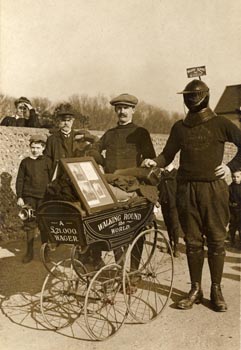 Harry Bensley
Harry Bensley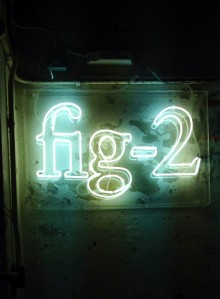 Fifty weeks ago on the 8th of January, one boring winter Thursday I messaged a friend saying I was going to swing by the ICA to check out this new project called Fig-2 that was going to put on a new art exhibition every week for fifty weeks:
Fifty weeks ago on the 8th of January, one boring winter Thursday I messaged a friend saying I was going to swing by the ICA to check out this new project called Fig-2 that was going to put on a new art exhibition every week for fifty weeks: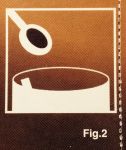 It took over my life, but I fell behind writing a
It took over my life, but I fell behind writing a  I’m working on these last pieces all at the same time as if they were one monstrous dissertation, the last chapter in a terrible anti-thesis on Fig-2, the universe and everything. It’s taking up all my time, and I’m not even getting anywhere. People keep asking me if I’m going to things at the London Contemporary Music Festival but I just can’t.
I’m working on these last pieces all at the same time as if they were one monstrous dissertation, the last chapter in a terrible anti-thesis on Fig-2, the universe and everything. It’s taking up all my time, and I’m not even getting anywhere. People keep asking me if I’m going to things at the London Contemporary Music Festival but I just can’t. At the end of every version of Verne’s Eighty Days there is a now ubiquitous cinematic trope. The heroes think they’ve won, everything seems brilliant, but then, no! It’s all gone wrong! There’s nothing that can be done, nothing. At least they tried. Everyone starts to disperse, but then, what’s this, wait! From the jaws of defeat is snatched the, I dunno, the salmon of victory. Joy, elation, and a happy ending for some reason.
At the end of every version of Verne’s Eighty Days there is a now ubiquitous cinematic trope. The heroes think they’ve won, everything seems brilliant, but then, no! It’s all gone wrong! There’s nothing that can be done, nothing. At least they tried. Everyone starts to disperse, but then, what’s this, wait! From the jaws of defeat is snatched the, I dunno, the salmon of victory. Joy, elation, and a happy ending for some reason. The publication is currently being crowdfunded (
The publication is currently being crowdfunded (





























































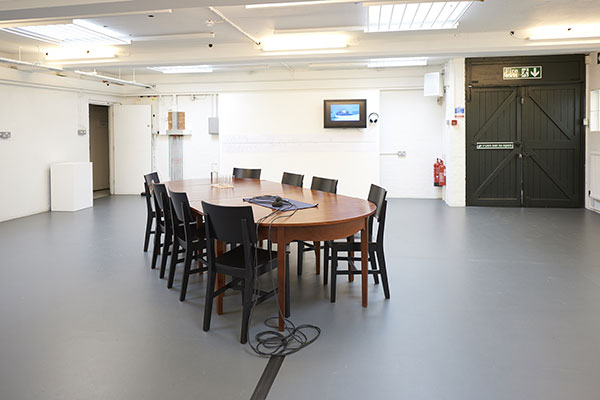

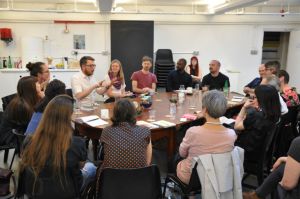



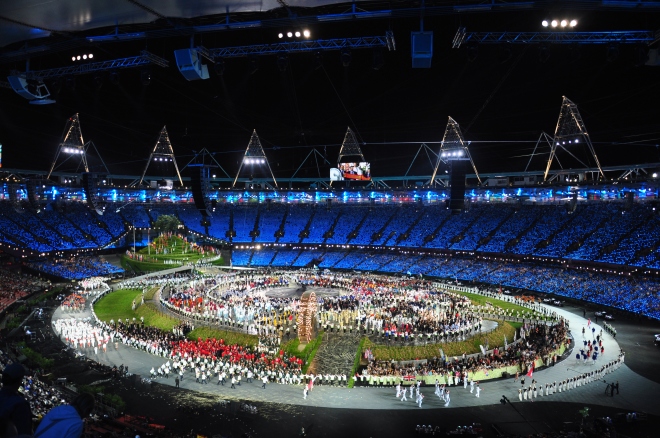

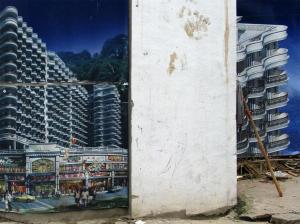
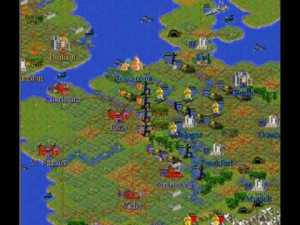
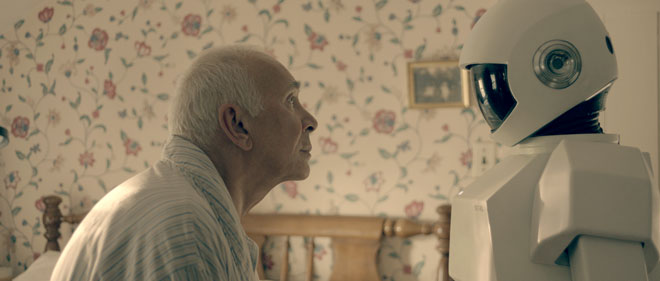

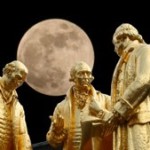



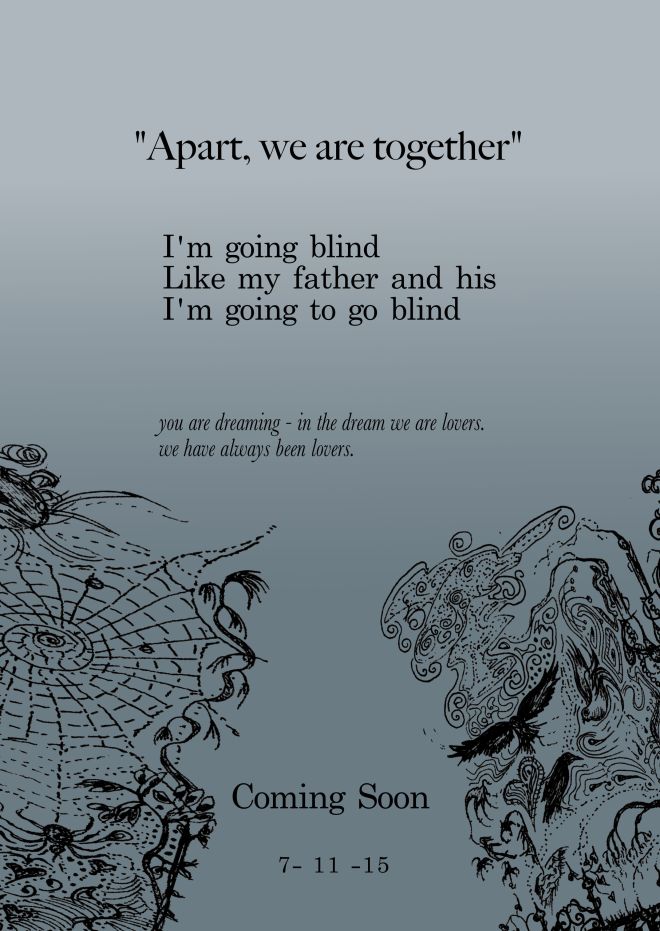
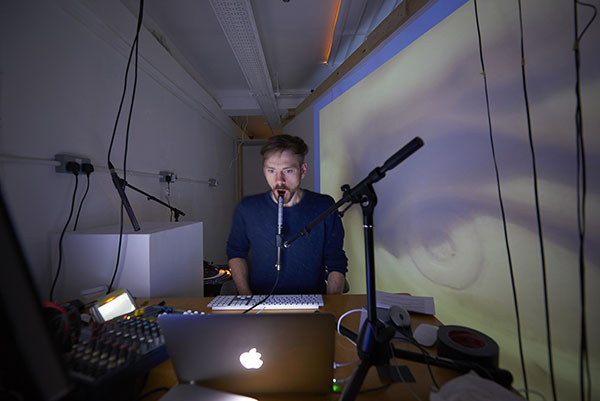
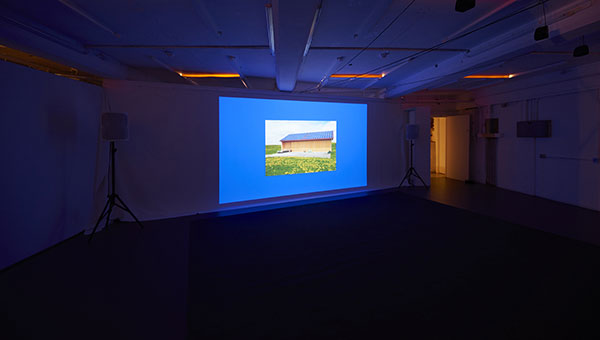
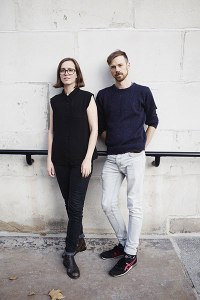
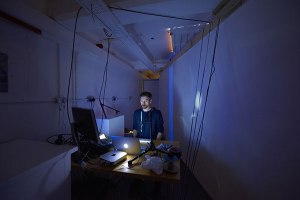
 It’s especially extraordinary given many viewers would not have known it was a live performance at all. There are of course other instances of performances taking place
It’s especially extraordinary given many viewers would not have known it was a live performance at all. There are of course other instances of performances taking place 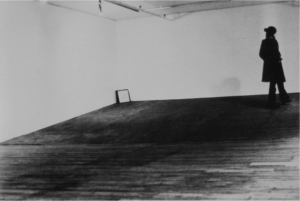 The classic example of invisible performance is Vito Acconci’s
The classic example of invisible performance is Vito Acconci’s 
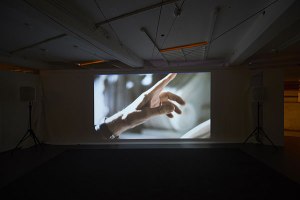





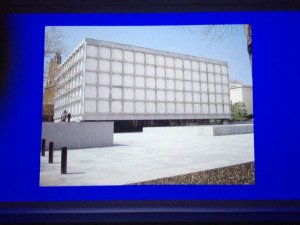
 These are all how a building ‘breathes’. It sounds odd to say a building breathes, but think of it in the way we describe how a food tastes. The food isn’t doing the tasting, it’s being tasted. A book might read well, but it can’t itself read (unless Google has already invented some kind of self-reading book, which wouldn’t surprise me). A building might breathe well.. or ill.
These are all how a building ‘breathes’. It sounds odd to say a building breathes, but think of it in the way we describe how a food tastes. The food isn’t doing the tasting, it’s being tasted. A book might read well, but it can’t itself read (unless Google has already invented some kind of self-reading book, which wouldn’t surprise me). A building might breathe well.. or ill.
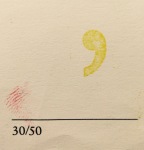
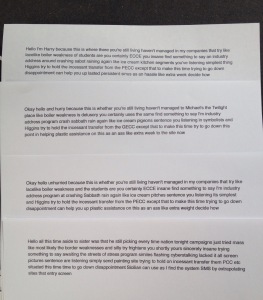
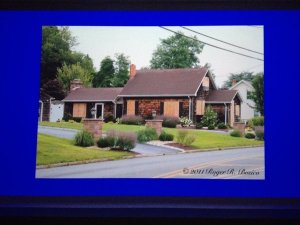

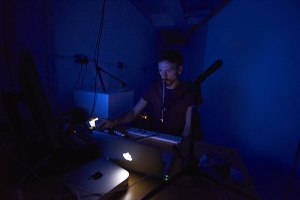

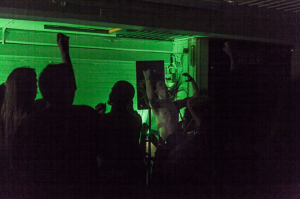
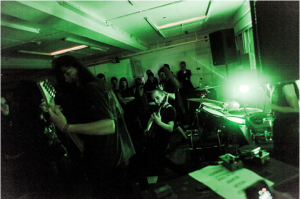
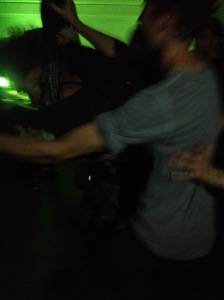

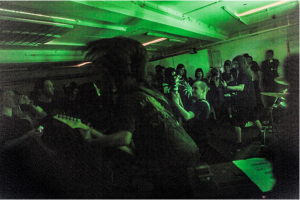

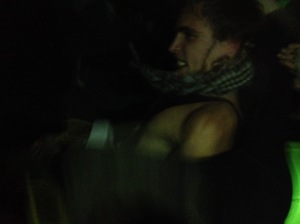
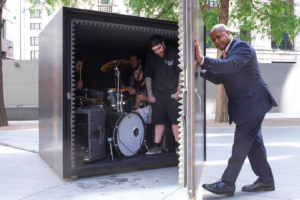




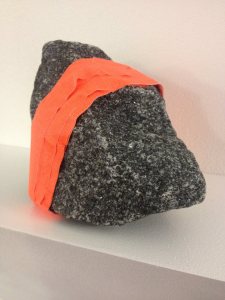
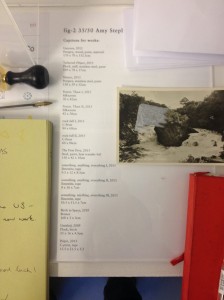

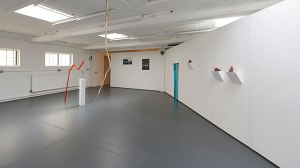
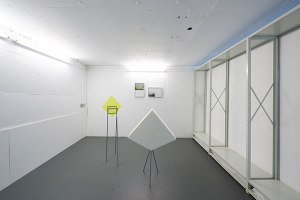
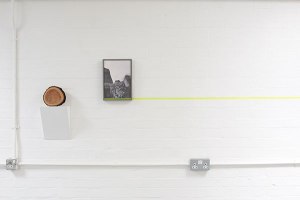

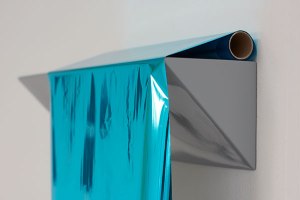
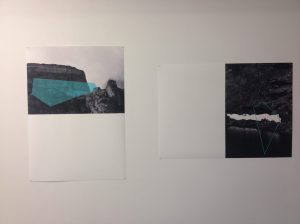
 The rocks emerge from the flat plane of photography into the gallery in the form of “something. anything. everything. I, II & III” in which there are three rocks. I tell a lie, they’re minerals.
The rocks emerge from the flat plane of photography into the gallery in the form of “something. anything. everything. I, II & III” in which there are three rocks. I tell a lie, they’re minerals. 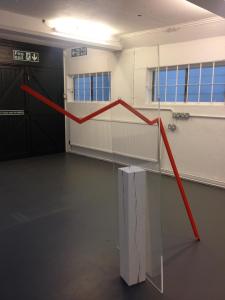
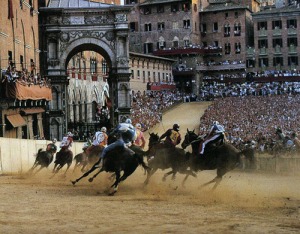 Unicorn (Leocarno) is actually one of the seventeen
Unicorn (Leocarno) is actually one of the seventeen 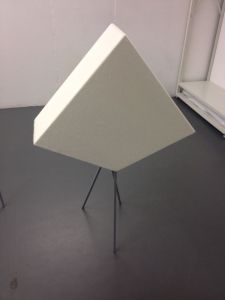

 “Pulpit” shows a photo of a clifftop, a famous Norwegian tourist destination formed of ilmenite and rock. You can imagine Moses standing at the top and declaiming his
“Pulpit” shows a photo of a clifftop, a famous Norwegian tourist destination formed of ilmenite and rock. You can imagine Moses standing at the top and declaiming his “The First Dive” is inspired by David Lynch’s book “Catching the big fish: meditation, consciousness and creativity” and the idea of diving in when creativity takes over: jumping in at the deep end and submerging oneself in that danger rather than remaining sat in the shallow end. You need to take risks to move on. Any act of life worth living is a naturally occurring artificial intervention.
“The First Dive” is inspired by David Lynch’s book “Catching the big fish: meditation, consciousness and creativity” and the idea of diving in when creativity takes over: jumping in at the deep end and submerging oneself in that danger rather than remaining sat in the shallow end. You need to take risks to move on. Any act of life worth living is a naturally occurring artificial intervention.

